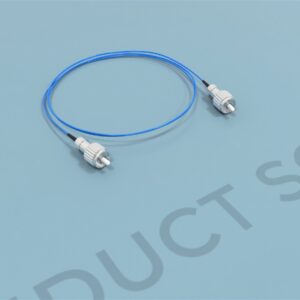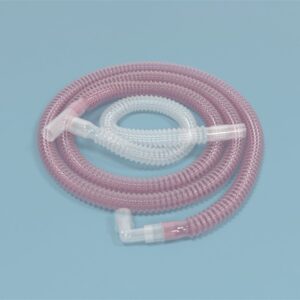$4,990.00
The Zebrafish Shuttlebox introduces a novel approach for conducting high-throughput experiments in learning paradigms. In this methodology, a pair of screens are employed within an automated computer interface to generate computer-animated images of zebrafish or any image designated by the researcher. The straightforward binary choice paradigm renders it a valuable tool for conducting high-throughput assays in zebrafish research.

MazeEngineers empowers preclinical neuroscience research with meticulously designed, customizable behavioral apparatuses. From manual classic mazes to fully automated smart systems, we provide the tools scientists need to capture high-quality, reproducible data for studies on learning, memory, anxiety, and depression.

bool(false)


Features |
38 L experimental tank (50 × 25 × 30cm - width × depth × height) |
2.5 cm thin; grey; corrugated; plastic frame mounted to midline; side; and bottom of glass to minimize contact with video side of glass |
Price includes two monitors |

The Zebrafish Shuttle Box assessment serves as a tool for gauging the cognitive prowess of zebrafish. Employing a tank setup equipped with dual digital screens positioned at opposite ends, it delves into associative learning, temporal learning, and social behaviors exhibited by subjects in response to visual cues.
Zebrafish have emerged as prominent animal models owing to their genetic resemblance to humans and manageable upkeep requirements. Moreover, their strong social inclinations, favoring shoaling, contribute to the rationale behind the Zebrafish Shuttle Box’s design. Leveraging the fish’s social tendencies, subjects are inclined to approach and linger around animated depictions of conspecific groups, a phenomenon bolstered by the reinforcing properties of such visual stimuli (Al-Imari & Gerlai, 2008). By utilizing digital screens to present visual cues, researchers attain heightened control over spatial and temporal stimulus parameters, obviating the necessity for live conspecifics as visual aids.
Among other apparatuses tailored for zebrafish research are the Zebrafish Y-maze, the Zebrafish Three-Chamber Choice, and the Zebrafish Place Preference Test.
The Shuttle Box comprises a glass enclosure with a volumetric capacity of 38 liters. Its dimensions measure 50 cm in width, 25 cm in depth, and 30 cm in height. To facilitate experimental procedures, a narrow corrugated plastic frame, 2.5 cm in width, is affixed to the interior sides and bottom glass at the center of the tank. Positioned on the outer surface of the tank, monitors are symmetrically situated on opposing sides.
Ensure zebrafish are housed in tanks where temperature and pH remain stable. Consistently maintain environmental parameters to minimize stress and potential harm to the subjects. Oxygenate the water to uphold its quality at an optimal level. Prior to conducting tests, thoroughly clean the tank. Employ tracking systems like Noldus Ethovision XT to monitor and document fish behaviors. Notably, the Zebrafish Shuttle Box task does not necessitate habituation or pretraining.
Move the subject from its holding tank to the Shuttle Box. Present the animated stimulus on one of the screens for a duration of 20 seconds (Stimulus Presentation Interval). This is followed by a 90-second Inter-Stimulus Interval (ISI) wherein no stimulus is displayed. Repeat this cycle of stimulus presentation and ISI at least 30 times. Depending on the requirements of the investigation, the stimulus can be displayed on alternating sides, the same side, or randomly.
Pather and Gerlai (2009) conducted an assessment on zebrafish of the AB strain, comparing their performance in the animated stimulus presentation task and associative learning tasks within the Shuttle Box. The stimuli comprised images of 6 female zebrafish exhibiting random movements at varying speeds. Their findings indicated similarities in response patterns between the animated stimulus presentation task and associative learning tasks. Zebrafish tended to approach the screen during stimulus presentation intervals and retreat upon stimulus removal. Notably, there was an uptick in swimming activity during the inter-stimulus interval (ISI), potentially driven by the fish’s exploratory tendencies upon stimulus cessation. Additionally, they observed a notable increase in thrashing behavior near the wall adjacent to where the stimuli were displayed, indicative of a shoaling response, which decreased significantly during ISI periods.
The following parameters can be observed using the Zebrafish Shuttle Box.
The Zebrafish Shuttle Box task serves as a valuable tool for evaluating various cognitive processes, including learning, memory, and developmental changes in zebrafish. Its computerized nature and simplicity facilitate high throughput screening. By digitally presenting stimuli, researchers gain full control over spatial and temporal stimulus delivery, thereby enhancing precision in experimentation. This versatility allows for the assessment of diverse aspects of learning, such as fear-based learning using aversive visual stimuli. Moreover, the Shuttle Box enables the investigation of the effects of brain lesions, pharmacological interventions, and various diseases and disorders on zebrafish behavior and cognition.
Al-Imari, L., & Gerlai, R. (2008). Sight of conspecifics as reward in associative learning in zebrafish (Danio rerio). Behavioral Brain Research, 189:216–9
Pather, S., & Gerlai, R., (2009) Shuttle box learning in zebrafish (Danio rerio). Behav Brain Res, 196(2), pp.323-7
There are no questions yet. Be the first to ask a question about this product.